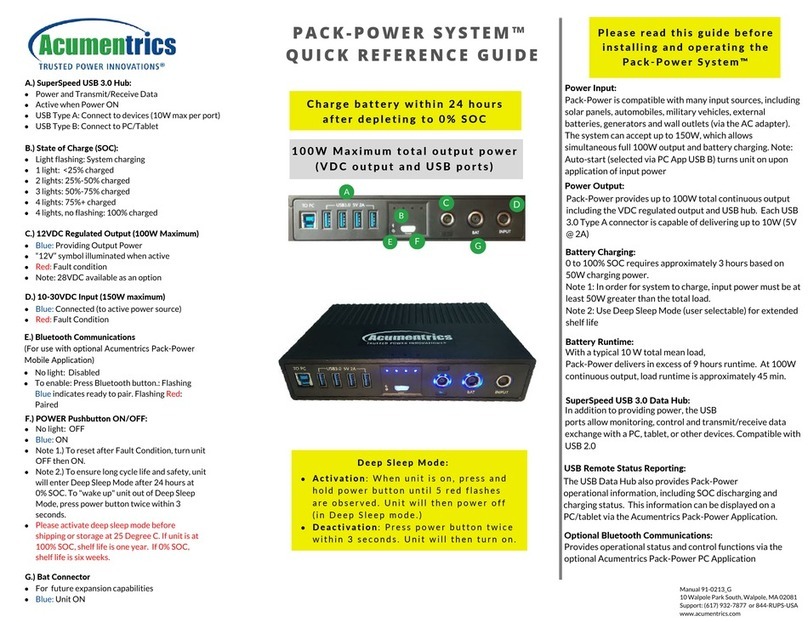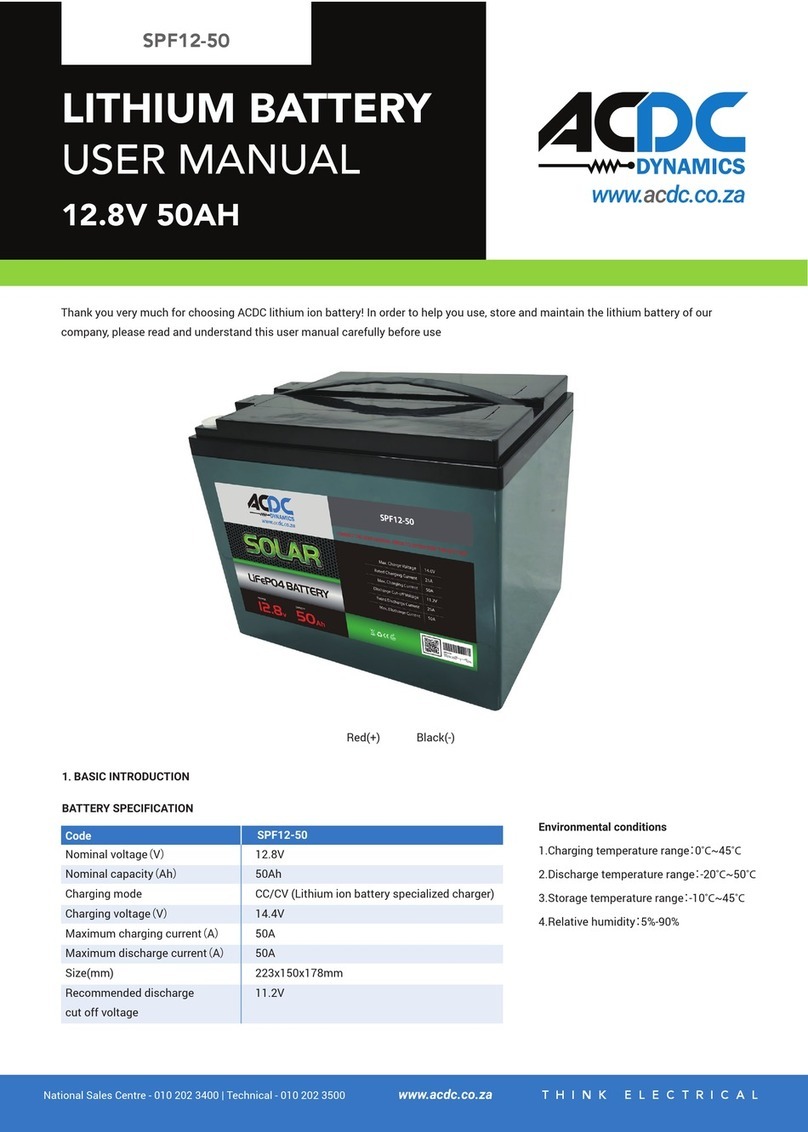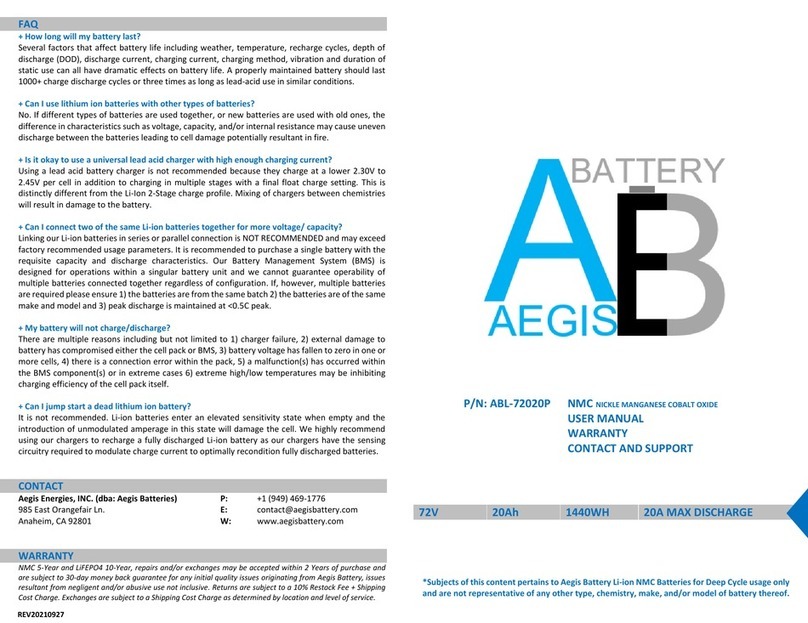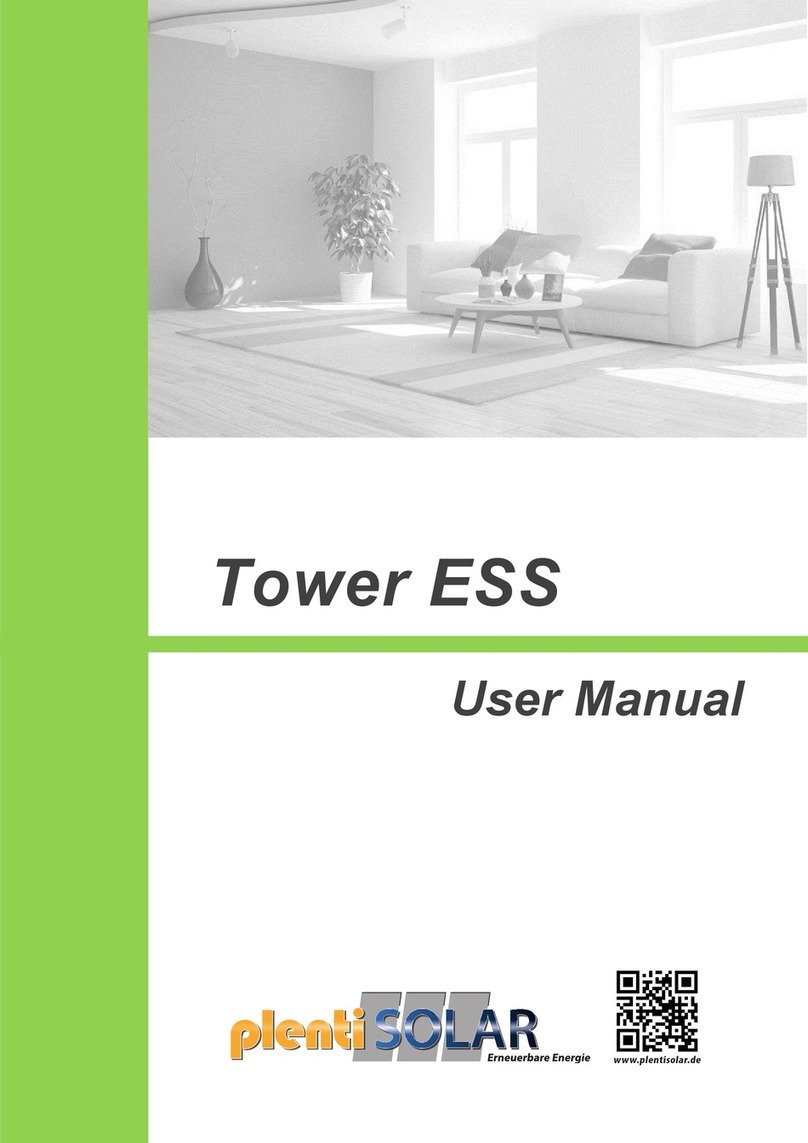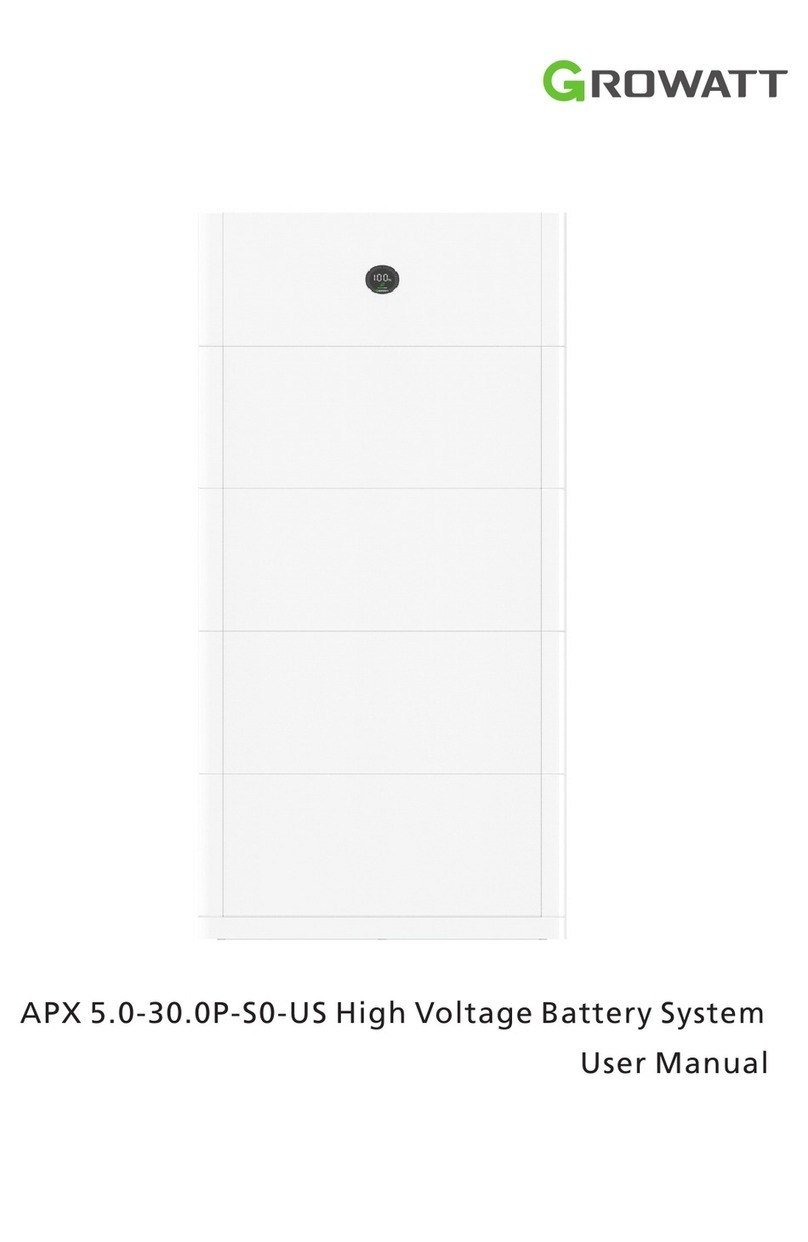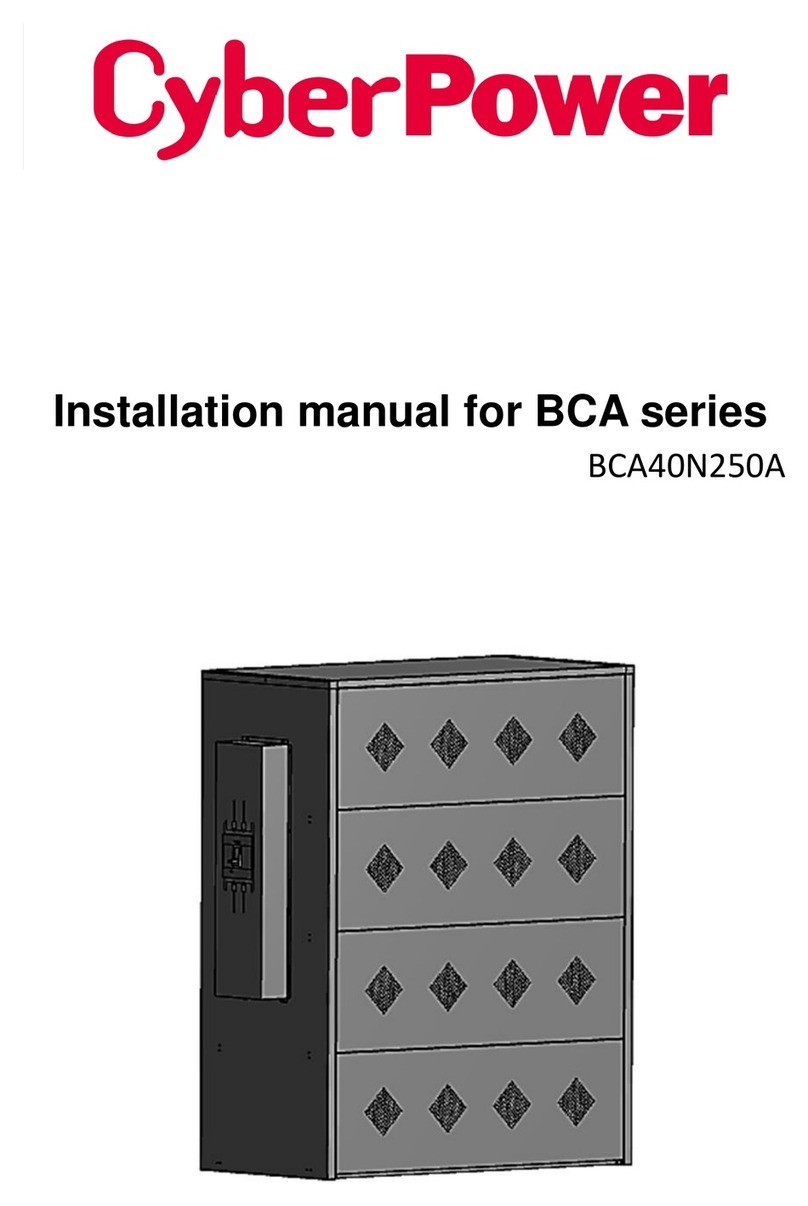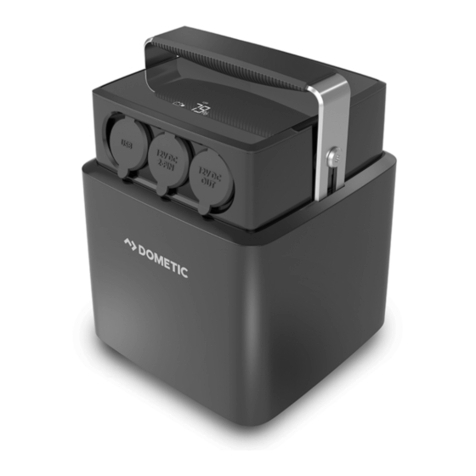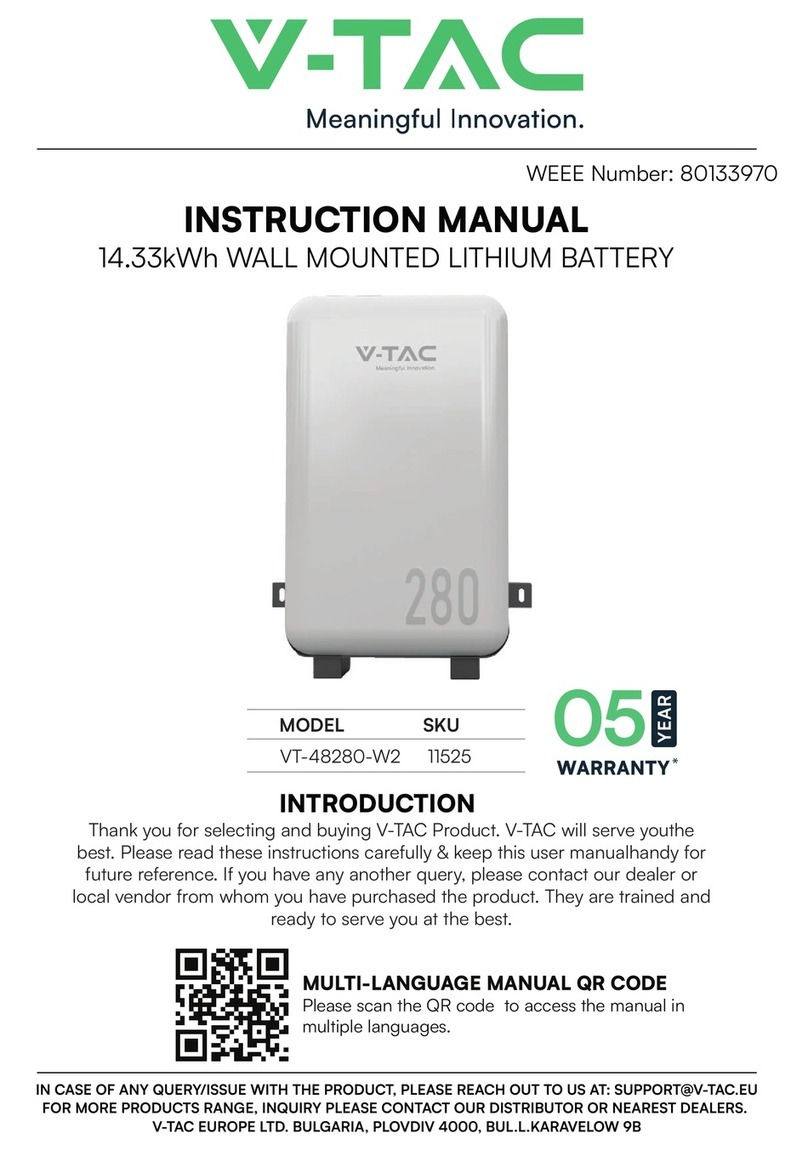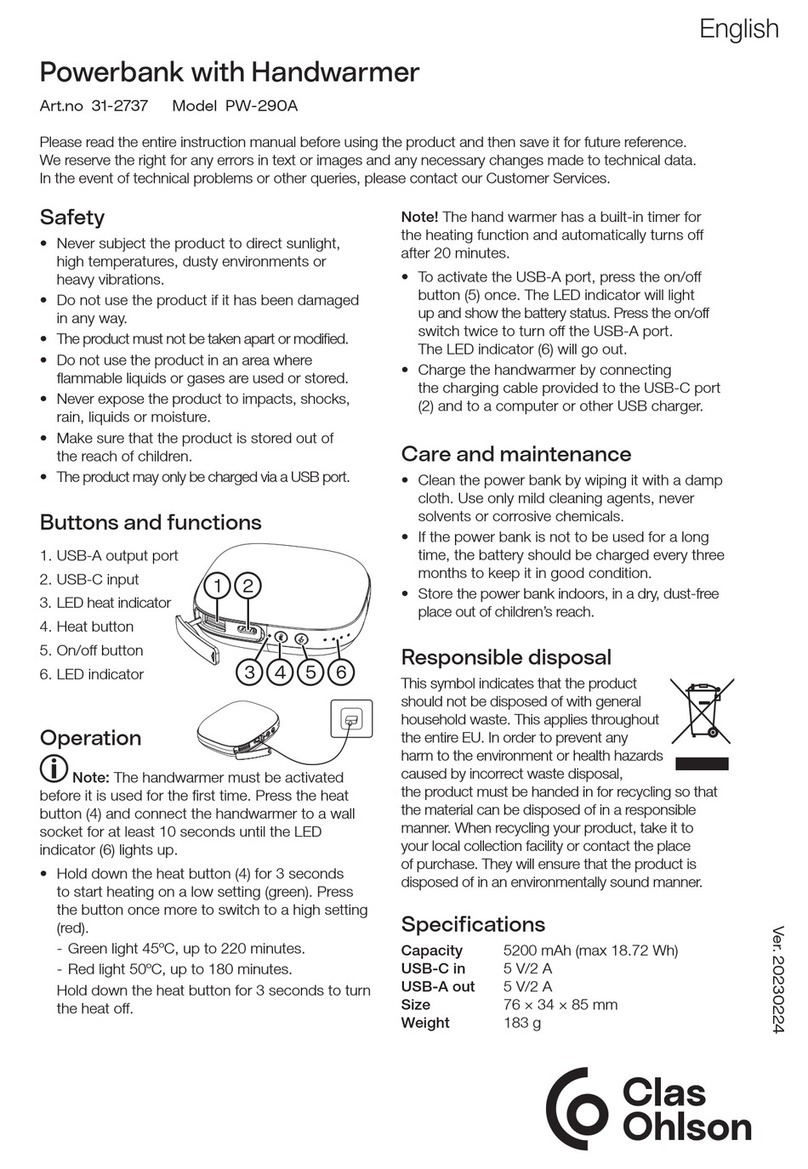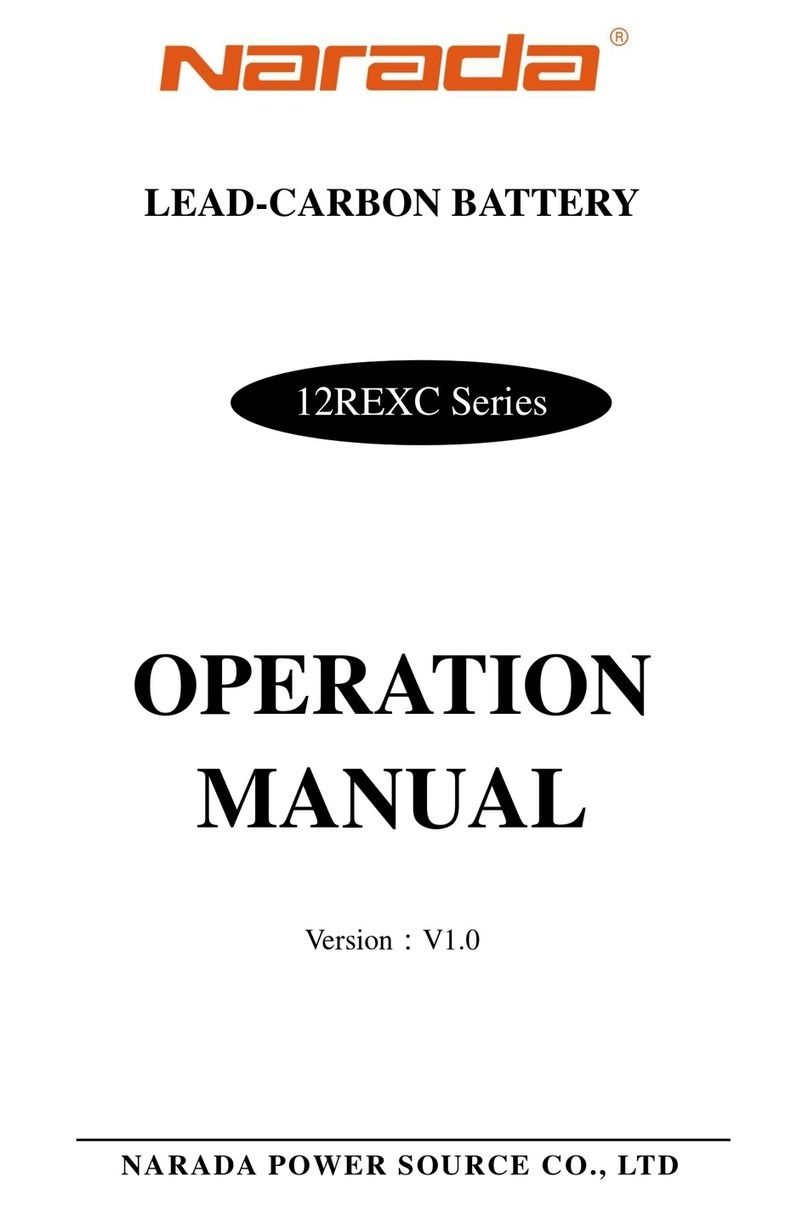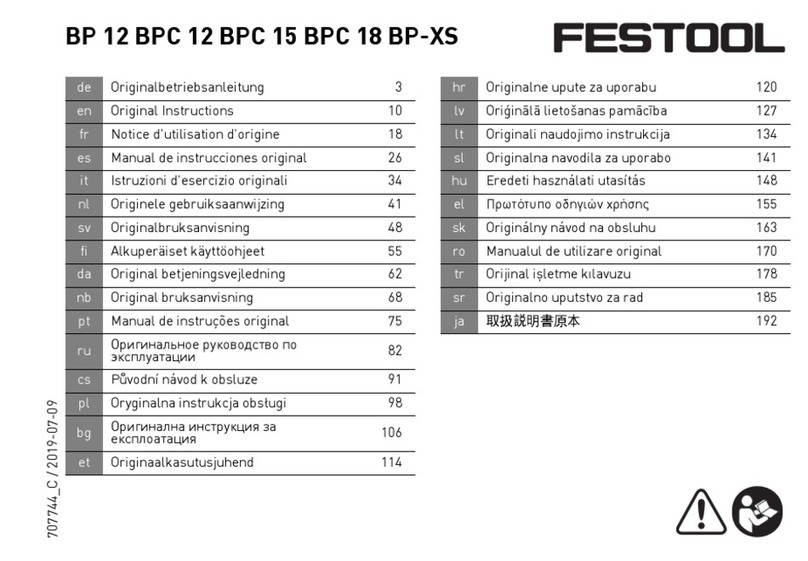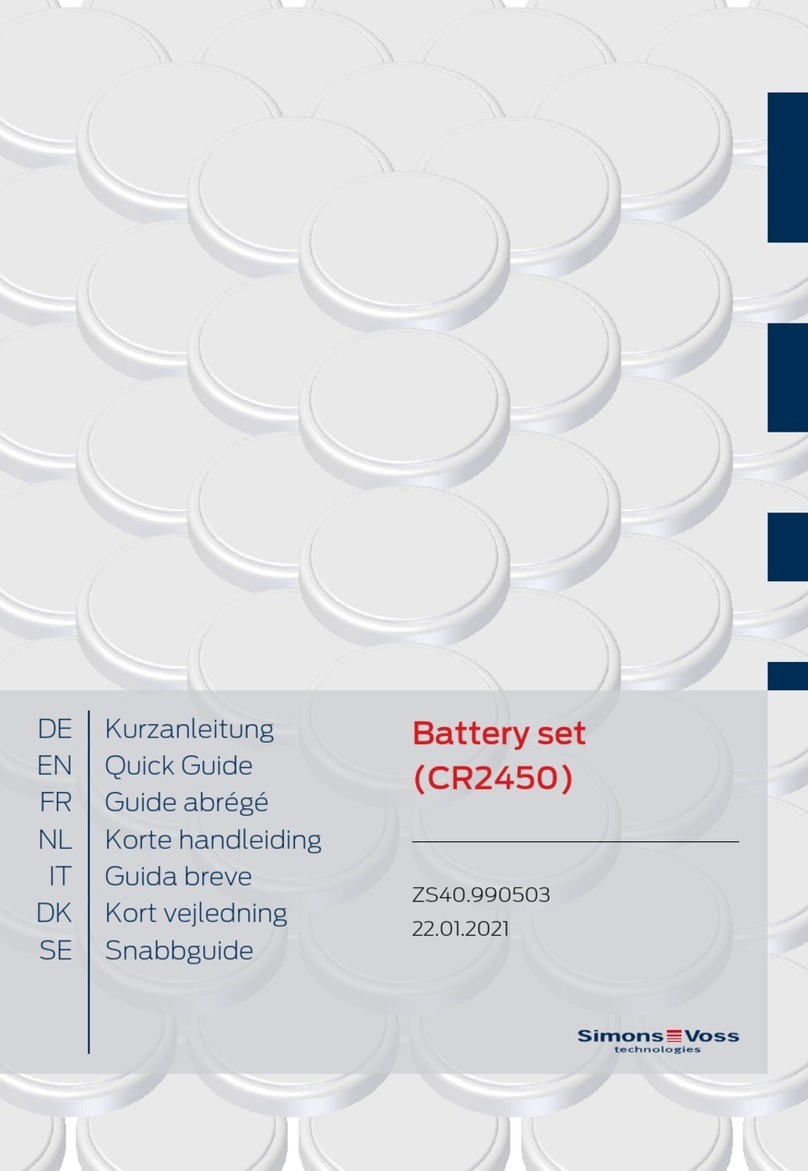TheSunPays BALI48 User manual

1
Lithium-ion Battery Pack
Model: BALI48
User manual
Version: 1.4

2
1. Safety precautions
Please strictly comply with all warnings and operating
instructions in this manual. Keep this manual in a safe
place and read the following instructions carefully
before installing the unit. Do not operate this unit
before carefully having read through all safety
information and operating instructions.
1-1 When in use
High voltage:
Beware of high voltage power supply. If wet or conductive material comes in contact with a high voltage
power supply, directly or indirectly, it can result in an electric shock that could be fatal.
Use correct tools:
When working with high voltage and AC power, ensure that the correct tools are used.
Static‐free
Static electricity would damage veneer on the electrostatic sensitive components. Before touching
the plug, isolate, circuit board or chips, be sure to use correct electrostatic prevention measures.

3
Disconnect the power supply in operation:
While operating the power supply, you must first switch off power supply. Use of power operation is
not allowed.
DC short circuit dangerous:
Power system provides Direct Current regulated power supply.
Remember, Direct Current short circuited could cause fatal damage to the equipment.
1-2 While charging
CAUTION
The temperature range over which the battery can be charged is 0°C to 45°C. Charging the battery at
temperatures outside of this range may cause the battery to become hot or to malfunction.
Charging the battery outside of this temperature range may also harm the performance of the battery
or reduce the battery’s life expectancy.
1-3 When discharging the battery
DANGER
Do not discharge the battery using any device, other than that of the specified device. When the battery
is used in devices other than the device specified, it may damage the performance of the battery or
reduce its life expectancy. If the device causes an abnormal current to flow, it may cause the battery
to become hot and cause serious damage to the battery.
CAUTION
The temperature range over which the battery can be discharged is -20°C to 60°C. Use of the battery
outside of this temperature range may damage the performance of the battery or may reduce its life
expectancy.

4
2.Table of Contents
1. Safety precautions ....................................................................................................... 2
1-1 When in use ............................................................................................................. 2
1-2 While charging .......................................................................................................... 3
1-3 When discharging the battery..................................................................................... 3
2.Table of Contents ............................................................................................................ 4
3. Parameters of battery .................................................................................................... 7
3-1 Parameters of battery pack ........................................................................................ 7
3.2 Technical parameters of Battery Management System (BMS) ........................................ 8
3-3 Dry contact description ............................................................................................ 19
4. Basic block diagram...................................................................................................... 20
5. Installation and operation ........................................................................................... 20
5-1. Unpacking and inspection ....................................................................................... 20
5-2. Panel view ............................................................................................................. 21
5-3. Single battery installation ........................................................................................ 23
5-4. Software installation ............................................................................................... 24
5-5. Installation of battery in parallel .............................................................................. 24
5-6 Installation precautions............................................................................................ 24
5-7 Operation instruction for installation.......................................................................... 26
5-8. Before switching on the battery ............................................................................... 31
5-9. Communication of battery....................................................................................... 31
5-10. Monitor PC Software interface ............................................................................... 33
5-11 Upper machine instructions .................................................................................... 33
5-12 Address switch function (Only in parallel) ................................................................ 38
5-13 Communication function......................................................................................... 38

5
6. BMS operations............................................................................................................. 40
6-2. Buzzer operation (optional) ..................................................................................... 41
6-3. Reset key function.................................................................................................. 41
7. Troubleshooting............................................................................................................ 42
8. Storage and maintenance ............................................................................................ 42
8-1. Storage ................................................................................................................. 42
8-2. Maintenance .......................................................................................................... 42
9. Product responsibilities and consulting....................................................................... 44
Other manuals for BALI48
1
Table of contents
Other TheSunPays Batteries Pack manuals

